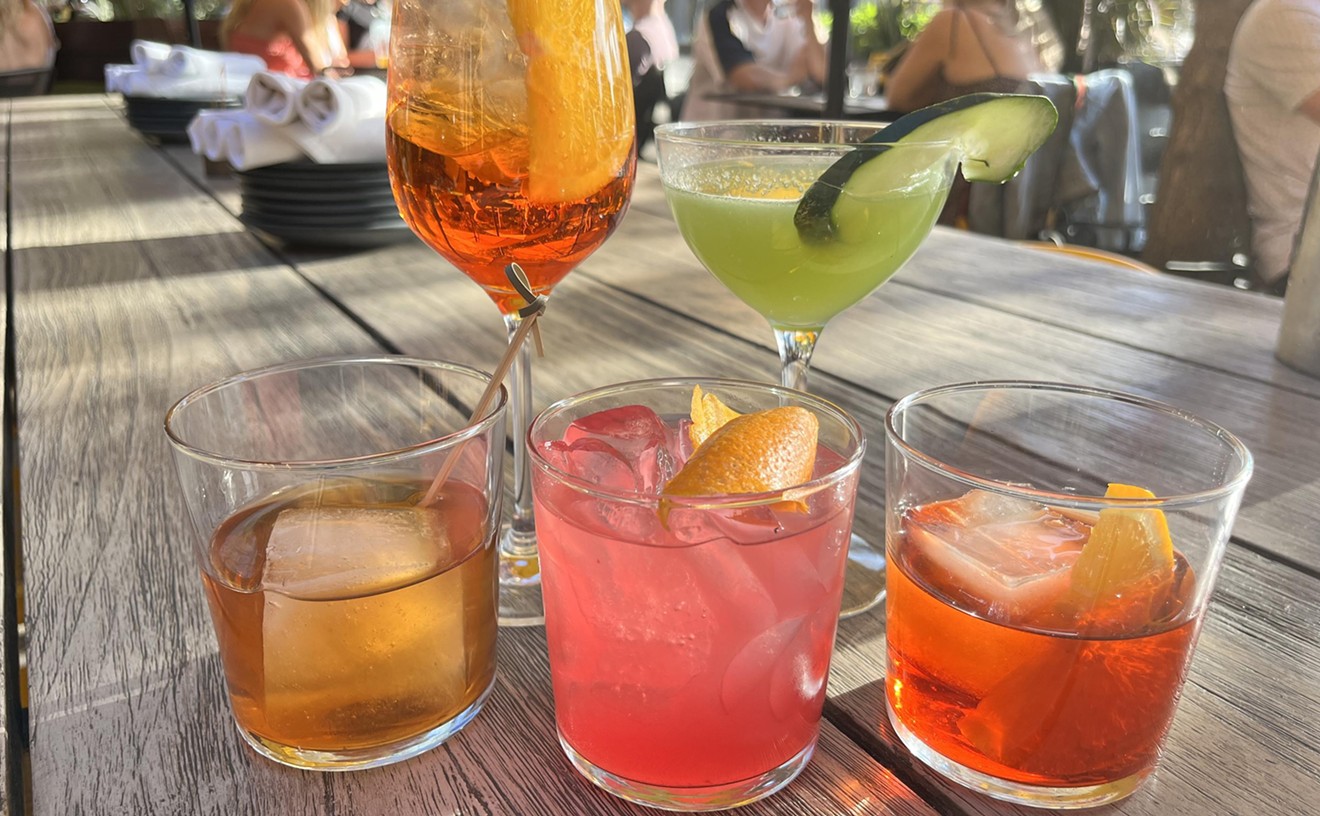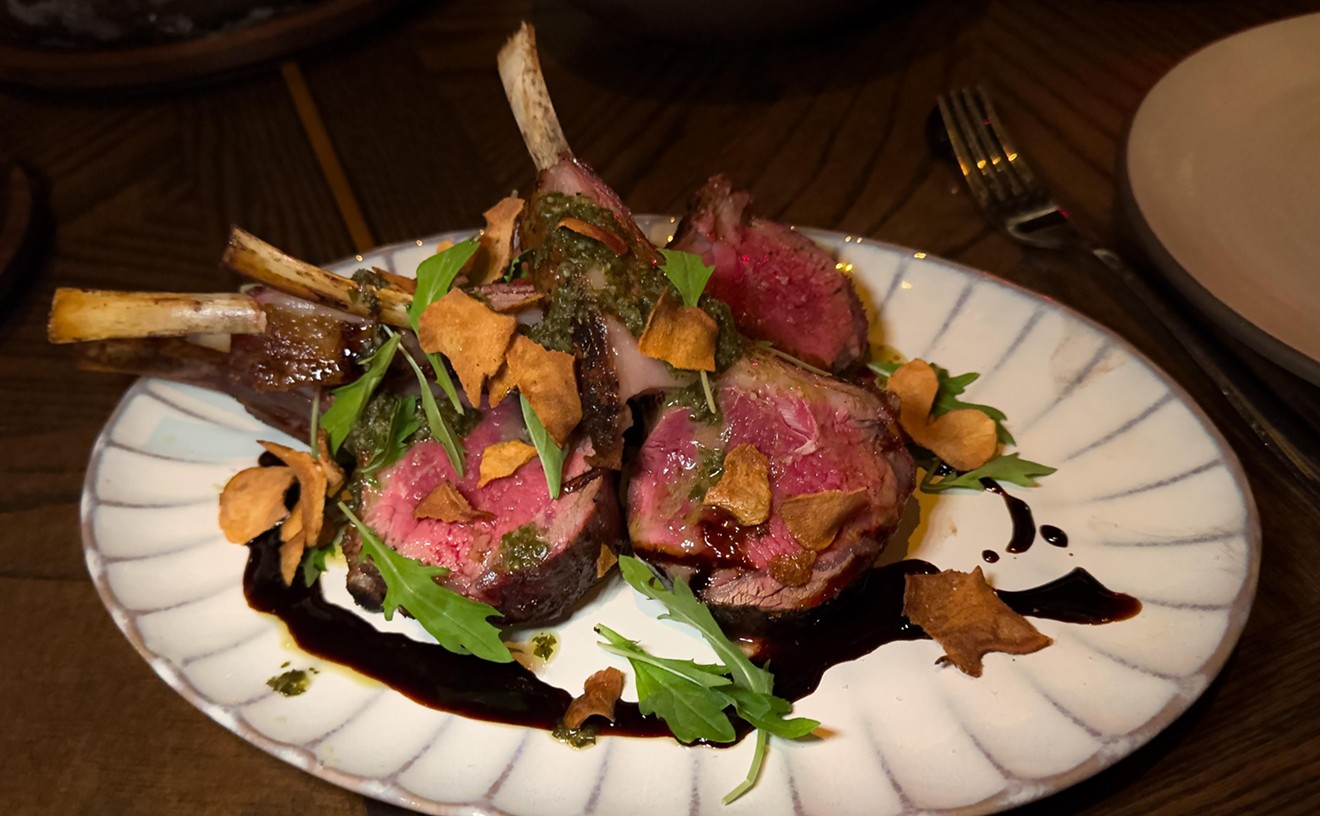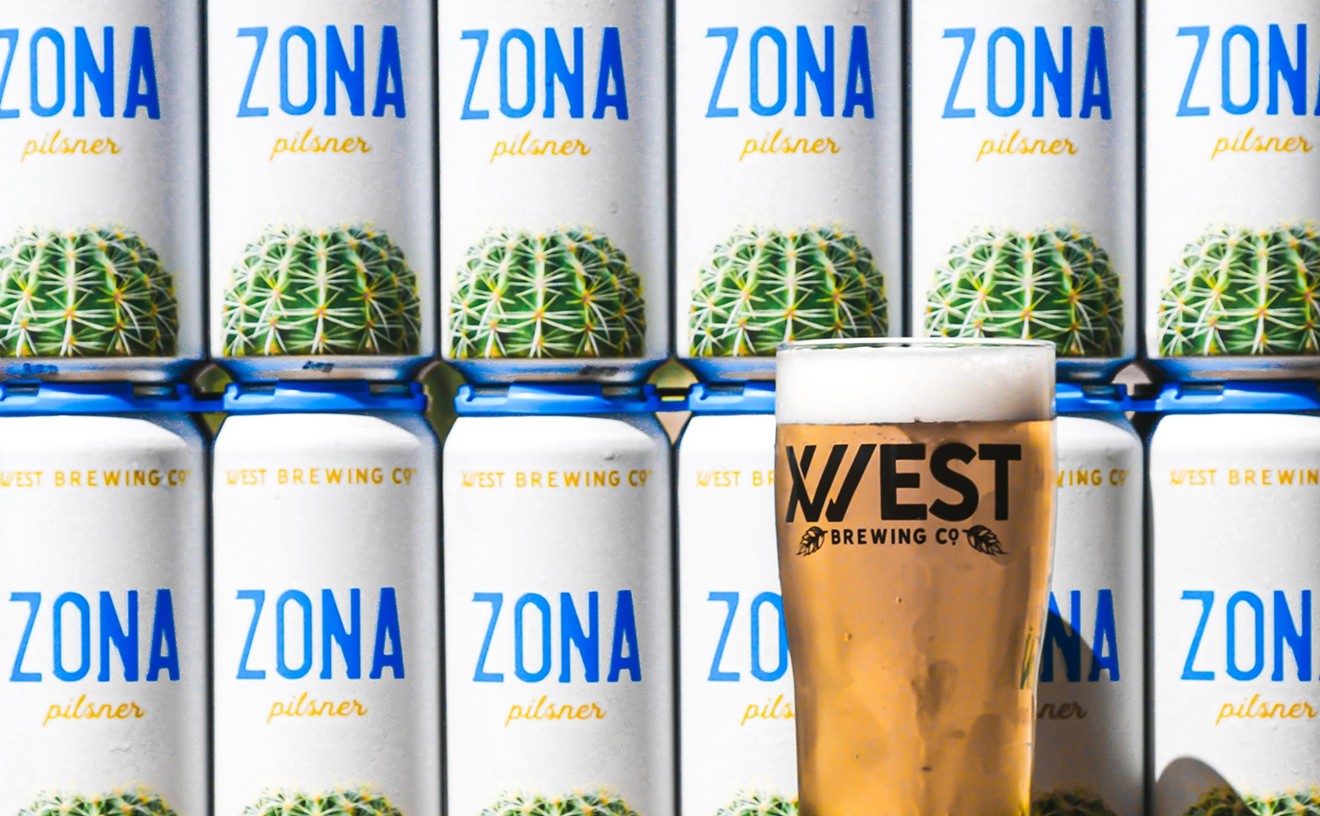In researching the best Mexican restaurants in Phoenix for a recent assignment, the difficult part was not in sorting through a mind-numbingly large number of reviews by legitimate restaurant critics, customers on Yelp, and amateur bloggers. The challenge came in trying to separate the real experience of the food — its flavor, scent, and color — from the cliché of what authentic Mexican food and a restaurant serving it is supposed to be.
• “The tortillas were handmade, so you know it was authentic and traditionally made just like in real Mexico.”
• “The tacos were served on flour tortillas, like authentic crispy fish Baja tacos always are.”
• “Like eating part of authentic Old Mexico.”
• “When I walked in, the place looked straight out of a Robert Rodriguez movie, so I knew it would be authentically Mexican before I ate anything.”
• “I’ve never been to Mexico, but their tacos with handmade tortillas were as authentic as anything found there.”
• “Located in a rundown part of town, this restaurant’s cheerful and colorful interior provides a safe haven in which to sample some of the best of Mexican seafood outside of
[insert the name of whatever Mexican beach town the writer has visited].”
• “The establishment was clean, cheap, and the service from the owner, though mostly in Spanish only, was friendly.”
In the armchair anthropologist game, Americans are the undisputed champs. The sheer conviction and depth of expertise in Mexican cuisine that these critics demonstrate is nothing short of impressive and intimidating. I was born and raised in Mexico and have lived in the United States for most of my adult life. I’ve worked in kitchens for many years, serving Mexican, American, and other kinds of food, but I would hardly call myself an authority on the authenticity of Mexican cooking, despite having been raised with it and devoting much of my culinary career to it.
Yet armchair anthropologists exhibit no such uncertainty. These self-appointed authorities wield the stamp of authenticity fearlessly when it comes to a restaurant’s handmade tortillas, cheap prices, colorful ambiance, and quaintness of the family who owns it. Little is said about the food’s taste. It’s the handmade tortilla that is seen as the pinnacle of Mexican culinary achievement, and a rustic quality is emphasized above all.
Clearly, Mexican food in the United States has an image problem, not a taste problem.
When foodie gentrification occurs, the food is spoken of only in terms of stereotypes, rather than in terms of flavor. Stereotypes, after all, are derived from commonly held notions, perhaps culled from a tourist’s view of Mexico, from films in which Puerto Rican or Spanish actors portray Mexican heroes or villains, or from shots of a tipsy Anthony Bourdain at a Oaxacan street food stand, awkwardly perched on a plastic bucket, a sweating bottle of Mexican lager or neon-colored sugar-cane soda nearby as a kindly, brown-faced abuelita quietly works over a hot comal and a stack of handmade corn tortillas. Or maybe it’s Rick Bayless rambling about the fiesta that is life in Mexico, shoving a rustic authentic dish into the camera as he insists his own version is more rustic, more traditional.
The handmade tortilla, then, has become the indelible image of everything that Mexican food is: low-tech, rustic, of humble origins, and made by humble people. Is the tortilla important in Mexico and to Mexican people? Of course it is, but it isn't everything, only a small part of a much larger whole. Why is the American taco-eating public more concerned with the pedigree of their tortillas than the average Mexican? This is perhaps the core of the authenticity debate.
It's likely that the average Mexican (in or out of Mexico) has never made a tortilla in his or her life. A sacrilege and a horror — the critics might say — to the authentic culinary traditions of Mexico! Yet judging the Mexican people for not hand-making tortillas is like judging the French for not home-baking baguettes. It's an exercise in cultural and culinary snobbery and nothing else.
Making tortillas, something deeply rooted in Mexican history and culture, is still very much a part of the people, but so is taking out a warm, soft, pliable corn tortilla from its bag before leaving the tortillería and sprinkling it with coarse salt before rolling it and eating it while getting on with more pressing matters than tortilla making. If the tortilla is made of wheat flour, rather than corn, the scene plays out only slightly differently, perhaps with a rushed trip home to spread butter on the still-warm disc.
Of all the thoughts crossing the mind of the average Mexican, the authenticity of this act, purchasing and eating a perfect, machine-made tortilla — made of nothing more than maíz, sal, y agua or harina, manteca, agua, y sal — is not one of them.
The authenticity argument inevitably and ridiculously veers toward the correctness of corn versus wheat tortillas. "Real tacos come on corn tortillas!" cry armchair critics. "Wheat is a European import into the Americas!" the authenticity stamp wielders might say. Indeed it is, as are cilantro and pork, yet they are two of the top ingredients and flavors associated with Mexican cuisine and rarely questioned in their authenticity.
For three generations, the women of my family have decided to leave the tortilla making to the experts: the machines. My grandmother will say she does not make tortillas, she makes cookies. And this woman has been gently enveloped by the scent of freshly heated, machine-made tortillas — a staple in her kitchen — my entire life, and I cannot imagine it being any other way.
My mother's non-tortilla days were briefly interrupted during our three years of living in southern Spain in the early 1990s, a time well before the global popularity of Mexican food had grown to be what it is today and before tortillas, whatever quality they may be, could be easily found almost anywhere. A bag of Quaker masa flour found its way to us from a nearby American naval base, and with a makeshift press, my mother proceeded to portion, shape, and cook small stacks of tortillas. She probably hated every moment she spent making those few tortillas, thinking of how much better spent her time would be elsewhere — perhaps scrubbing every single line of grout in our terra-cotta-tiled house with the smallest, softest toothbrush. It's been 25 years since this tortilla-making trauma occurred. Perhaps she has recovered by now.
My own tortilla-making days didn't come until I was part of the opening team of a taco shop, one prominently featuring those all-important handmade corn tortillas. The irony didn't escape me for one moment, to be called upon suddenly as an expert in a field of cookery I had — and I will admit it freely — no previous experience with. I could make tamales and empanadas in my sleep, as these are the kinds of foods which require a warm and delicate hand to achieve anything remotely edible. Tortillas? Never. I was among the third generation of women in my family leaving it to machines.
As someone who has cooked for a living, the process of endlessly repeating the menial task of making corn tortillas — portioning, shaping, pressing, laying on a hot cast iron comal, flipping, and stacking — can have a zen-like appeal. That is, until the shift’s other designated tortilla flipper fails to show up, and as the fastest, most Mexican tortilla flipper in the land, it becomes your job to keep the tortillas stacked high. When you’re making tortillas at the most Instagram-friendly taco shop in town — an hourlong wait of hipsters lining up outside the door for the privilege of tasting your handmade tortilla — every day feels like the dreaded Taco Tuesday.
Dear American taco-eating public, the reality is this: The hand-making of tortillas on a commercial level is a hot, sweaty, finger-scalding misery. Tortillas get eaten faster than they can be produced, no matter how fast the tortilla maker is. And trust me, dear American taco-eating public, I am fast. Anyone capable of carrying out this job for more than a few weeks at a time should be carried through the streets on the shoulders of revelers at the next very authentic (ahem) Cinco de Mayo celebration, worshiped as the saint he or she truly is.
Having been given no such parade, I admit that my desire to eat tacos (corn or flour, machine or handmade) has been severely diminished since escaping the comal.
The idea that authenticity starts and ends with homemade tortillas is absolute crap.
Never mind that chefs like Enrique Olvera, Jorge Vallejo, Diego Hernandez Baquedano, and Guillermo González Beristáin have been not so quietly modernizing food in Mexico, with the increasing attention of a worldwide food-obsessed media embracing the indigenous culinary traditions of Mexico and Mesoamerica and the European and Asian influences that commingled with them over the centuries.
Olvera's food at Cosme, his New York City restaurant, has been called both "not understandable as Mexican food" and a "thrill ... [which] sails right over ideas like tradition, authenticity, and modernity," the last statement coming from Pete Wells of the New York Times. Yet even Olvera's modern representations of Mexican cuisine cannot escape the ubiquitous demand for handmade tortillas — as though turning corn into a cooked disc is the ultimate achievement in Mexico's venerated history of cooking. Dear chefs of Mexico (and chefs everywhere specializing in Mexican cuisine), no matter what you do and achieve in your career and your cuisine, your efforts will always be reduced to just how good a tortilla you make.
Someday, the expectations of Mexican food might go beyond free chips and salsa, cheesy murals of Frida Kahlo, or Día de los Muertos imagery. Until they do, the consumer will be the biggest loser. The trap of authenticity has reduced Mexican cuisine — as varied as the geography of Mexico itself — to street tacos on sale on Taco Tuesday, cheese-smothered enchiladas, and chilaquiles (a food more admired in the States than in it is Mexico).
I confess to having wielded the authenticity stamp over the years. At one point, I sold my homemade sauces at Phoenix-area farmers' markets. Who was going to buy my mole poblano unless I told customers, “Yes, it’s an authentic recipe. Like the nuns in Puebla used to make.” My chile colorado sold a hell of a lot better if it was billed as “the only way that chile colorado is made in my home state of Sonora.”
The caramel sauce couldn't be just caramel: It was cajeta de Celaya, and every single eight-ounce jar came with the story of the mountains of Guanajuato, "where this caramel originated and where goats thrive in a landscape too harsh for cows; of working for eight to 12 hours at a time to slowly reduce and caramelize my own locally sourced goat milk, using only the purest Mexican sugar, stirring constantly and lovingly, until the perfect thick spoon-coating consistency was achieved.
I fed customers the image of a pigtailed Mexican señorita. I spoke more of my hometown and my Mexican childhood to complete strangers than I ever would have cared to, when all I wanted to speak of was the flavor of the products I made, why I used certain combinations of chiles in my sauces, and why goat milk was so important. I would rather have discussed how great it was that the goat farmer from whom I sourced milk named one of the goat kids after me. It wasn’t possible to say any of these things to most people coming to my booth at the farmers market. Instead, I heard the same thing over and over: “I thought you said this was Mexican food. Where are the tortillas? Shouldn’t you have salsa?”
I spun tales of authenticity and nostalgia, appealing to the glimpses of Mexico, real and imagined, the buyer may have had. How sad is it to operate in a market where food cannot be sold on taste alone but relies on the merit of the tales told? Eventually, my authentic Mexican food became about spinning tales — not cooking, and not the way I wanted to make a living or the way I wanted to portray the food I grew up with.
Somewhere in this effort, I became exhausted trying to change consumers’ preconceived notions of what authentic Mexican food is and isn’t, particularly when authenticity — in a form they didn’t recognize and didn’t care to learn about — was staring them in the face.
I became aware of the uselessness of my trying to make the following argument: Cuisine, like culture, evolves to reflect the time in which it exists. The Mexican food of today tastes different from the food of 10 or 20 years ago and undoubtedly is different from the food of “old Mexico.” Why would I, or anyone else, rustic tortilla press in hand, actively push for the backward evolution of food, all in the name of authenticity and tradition?
I no longer do, not when the most authentic part of Mexican cuisine is truly loving and enjoying the food in front of you, handmade or machine-made tortilla be damned.










